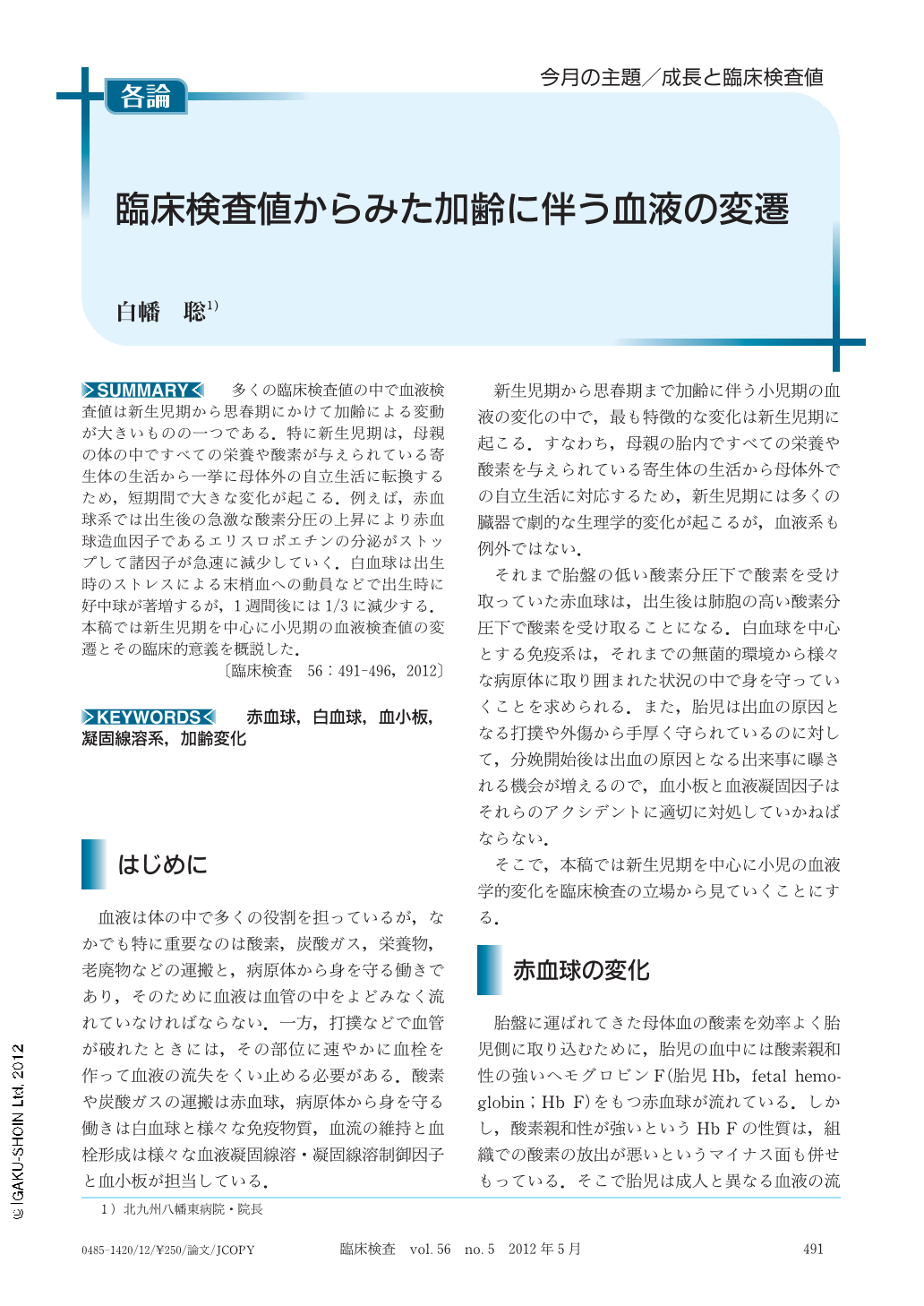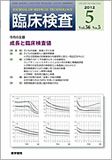Japanese
English
- 有料閲覧
- Abstract 文献概要
- 1ページ目 Look Inside
- 参考文献 Reference
多くの臨床検査値の中で血液検査値は新生児期から思春期にかけて加齢による変動が大きいものの一つである.特に新生児期は,母親の体の中ですべての栄養や酸素が与えられている寄生体の生活から一挙に母体外の自立生活に転換するため,短期間で大きな変化が起こる.例えば,赤血球系では出生後の急激な酸素分圧の上昇により赤血球造血因子であるエリスロポエチンの分泌がストップして諸因子が急速に減少していく.白血球は出生時のストレスによる末梢血への動員などで出生時に好中球が著増するが,1週間後には1/3に減少する.本稿では新生児期を中心に小児期の血液検査値の変遷とその臨床的意義を概説した.
In many laboratories reference values in infants and children, change of hematologic values due to aging from the newborn period to the adolescent period are prominent. For example, production of red blood cells dramatically decreases by a factor of 2 to 3 during the first few days after birth and by a factor of about 10 during the first week of life. This sudden and marked decrease in red blood cell production is initiated by the increase in tissue oxygen level that takes place at birth, as reflected by the disappearance of erythropoietin in plasma. In this article, I describe changes in hematological reference values during the newborn period and adolescence, and show their clinical significance.

Copyright © 2012, Igaku-Shoin Ltd. All rights reserved.


